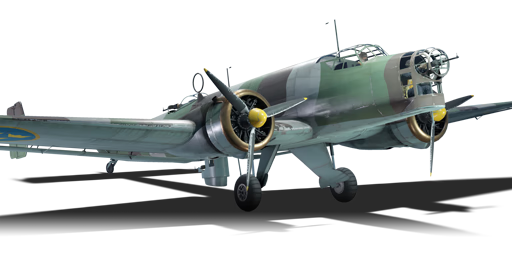



The B3C, originally built by the German aircraft firm Junkers as the Ju 86, was developed in the mid-1930s alongside rival Heinkel's He 111. Since the Luftwaffe were not officially allowed to build bomber aircraft at the time, the main purpose of the aircraft was to be a ten-person airliner which could, with minimal effort, be converted into a medium bomber. The Ju 86 was developed in the mid-1930s with diesel engines, but they proved unreliable in combat during the Spanish Civil War. The Luftwaffe replaced them with BMW 123 radial engines, and also exported the Ju 86K to Sweden and Hungary. Sweden used British Bristol Mercury engines instead, which were later license-built in Sweden and Poland.
It was introduced in Update 1.95 "Northern Wind". The B3C though an early war bomber is not without a box of tricks. While relegated to a medium bomber function, options in its suspended armament give it the option to carpet bomb smaller and lighter targets or to bomb heavier protected targets and bases. Externally outfitting an 853 kg torpedo gives the bomber the option to strike fear in fleet captains eyes, especially when a crew member announces "Fish in the water". Though for the most part considered an average bomber when it comes to manoeuvrability, rate of climb and level speed, the B3C has what it takes to deliver its ordnance to the target and has several critically placed defensive turrets to protect the bomber against any interlopers, intent on downing the bomber before it gets to its target.
flaps
flaps
flaps
brake
| Belt | Belt filling | Armor penetration (mm) at a distance: | |||||
|---|---|---|---|---|---|---|---|
| 10 m | 100 m | 500 m | 1000 m | 1500 m | 2000 m | ||
| T/T | 5 | 4 | 2 | 1 | 0 | 0 | |
| AP/T/AP/AP/AP | 13 | 12 | 7 | 3 | 2 | 0 | |
| T/I/AP/I | 13 | 12 | 7 | 3 | 2 | 0 | |












Flight performance | |
|---|---|
Survivability |
|---|
Weaponry | |
|---|---|